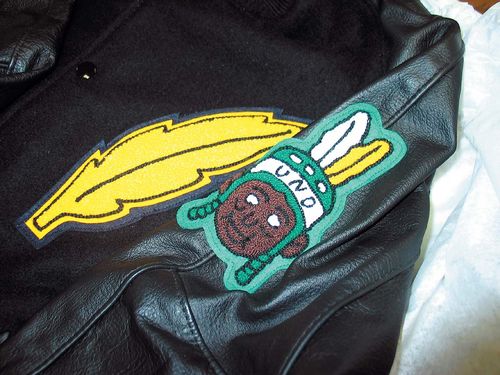By Jane Ahlin
Echoes of the Civil Rights movement could be seen in the civil disobedience of demonstrators, in protests and sit-ins. Along with methods of protesting, students had learned to say “black” instead of “Negro” and the “N” word was a no-no. There were rumblings that Native Americans in our state suffered discrimination not unlike that of blacks in the South, but the war and the women’s movement kept that concern from coming to the fore. At the time, the UND newspaper, The Dakota Student, dissed the war, identified with draft resistance, and angered alums, but the moniker was not questioned.
Looking back, the limitations of student understanding for racism–especially concerning Indians–are painfully obvious. Among 1968 yearbook pictures of UND’s 1967 Homecoming is a picture of “Sammy Sioux”–a white kid in a fringed outfit and headdress wearing cool sunglasses. He is standing next to a few participants in the “Sally Squaw” contest. The contestants were fraternity guys in long wigs, headbands with feathers, and “squaw” outfits. Offensive? Yes, but it didn’t stem from intentional spite toward Indians; it was cultural ignorance.
Ignorance, however, could not explain 1972. As part of “King Kold Karnival” (a UND winter festival built around hockey the way homecoming is built around football), an ice sculpture put up by a fraternity was of a topless Native American woman with a sign pointing to her breasts saying, “Lick em Sioux.” A Native American student took after the ice figure with an ax, and there was quite a dust-up.
That’s when the moniker could have and should have been changed. No question it awakened the administration to a festering problem. However, the actual decision made was to end the festival and keep the moniker.
Anything since this age of buffoonery is stupid spin. It's a feeble attempt to save the racist caricatures from the dustbin of history. It's much like the Confederate flag, which was an explicit symbol of white supremacy but now supposedly stands for Southern pride. Indian mascots used to stand for white supremacy too, and schools should abandon them for that reason alone.
Below: Sammy Sioux.


No comments:
Post a Comment
Note: Only a member of this blog may post a comment.